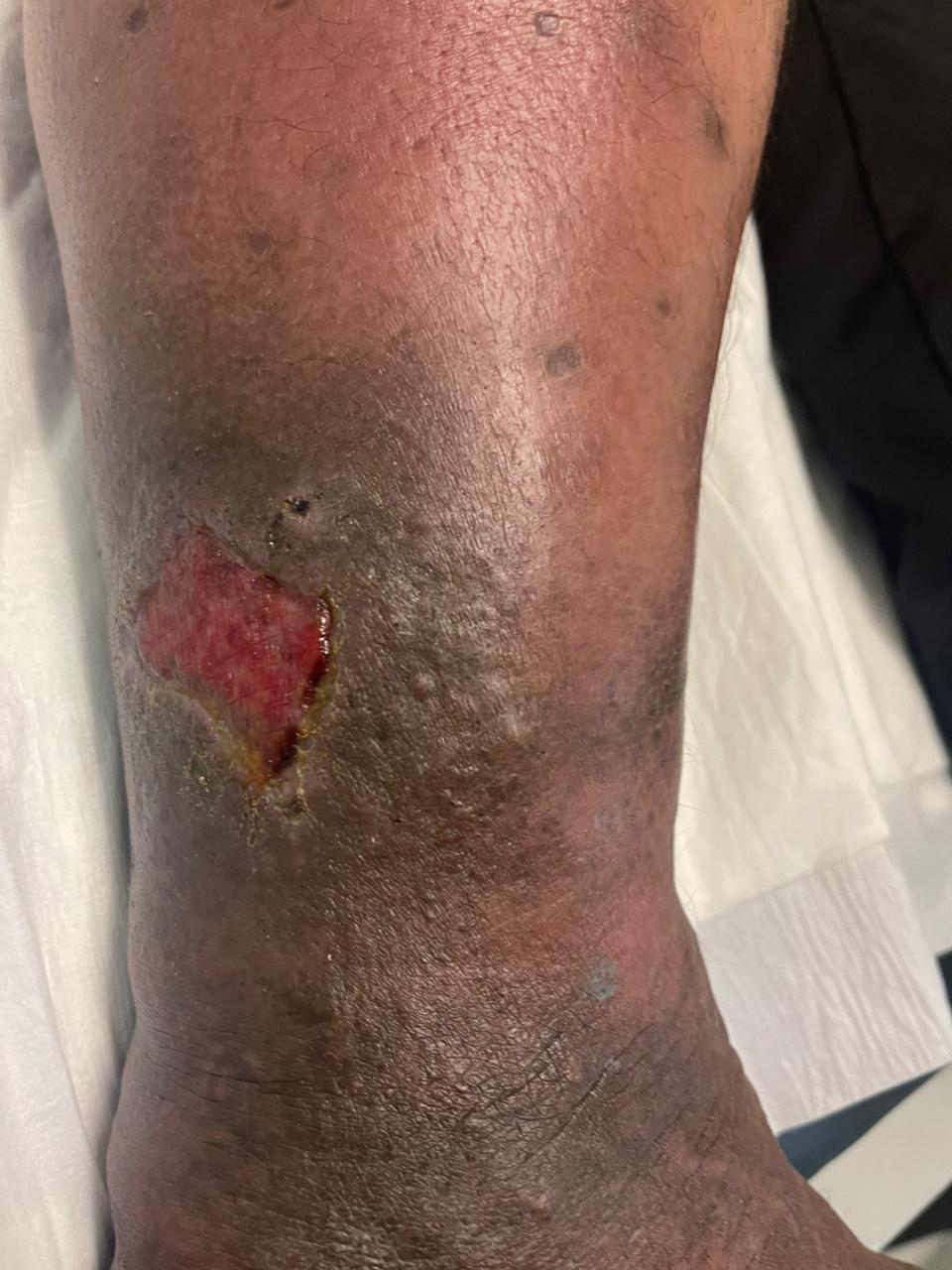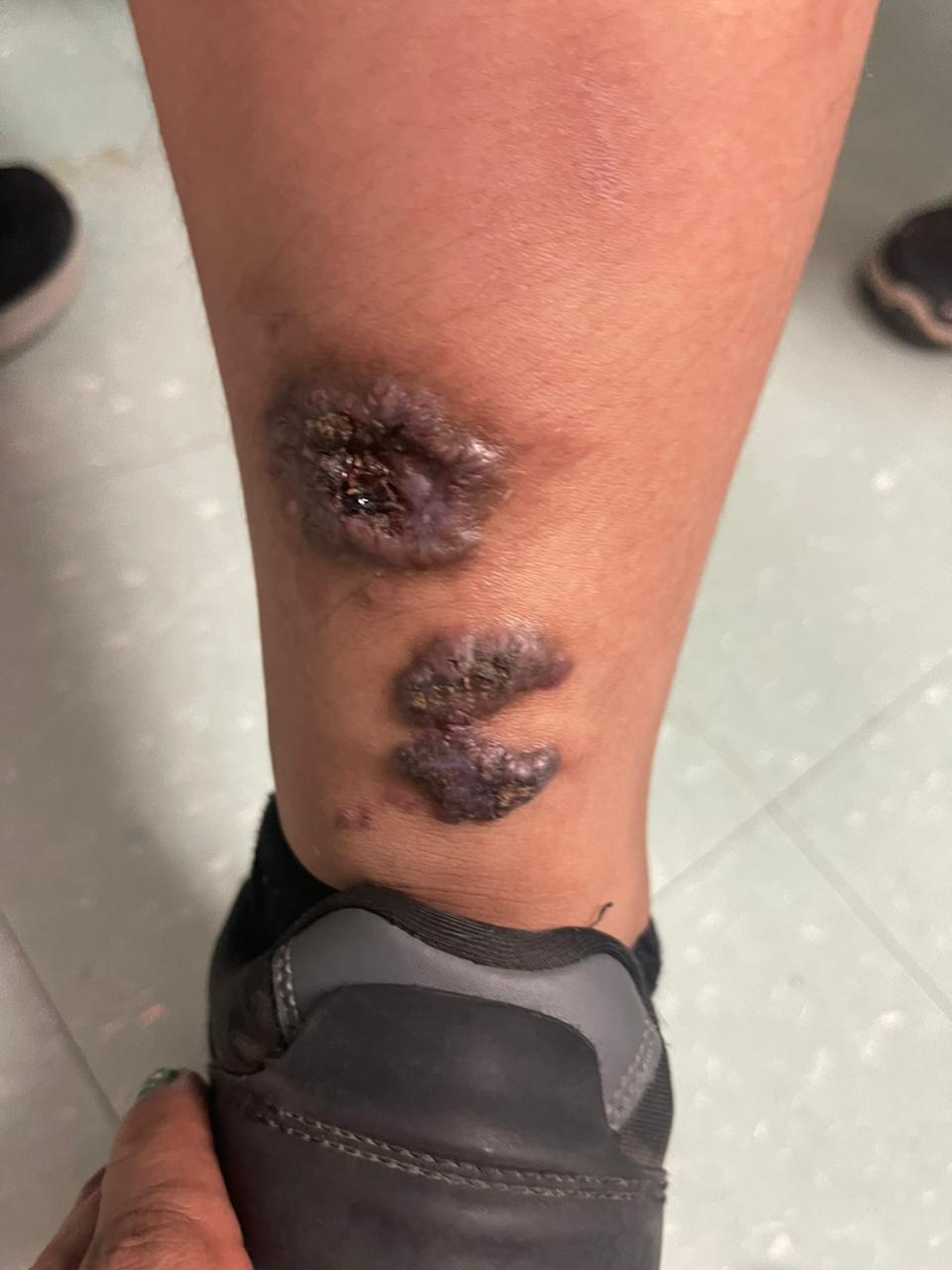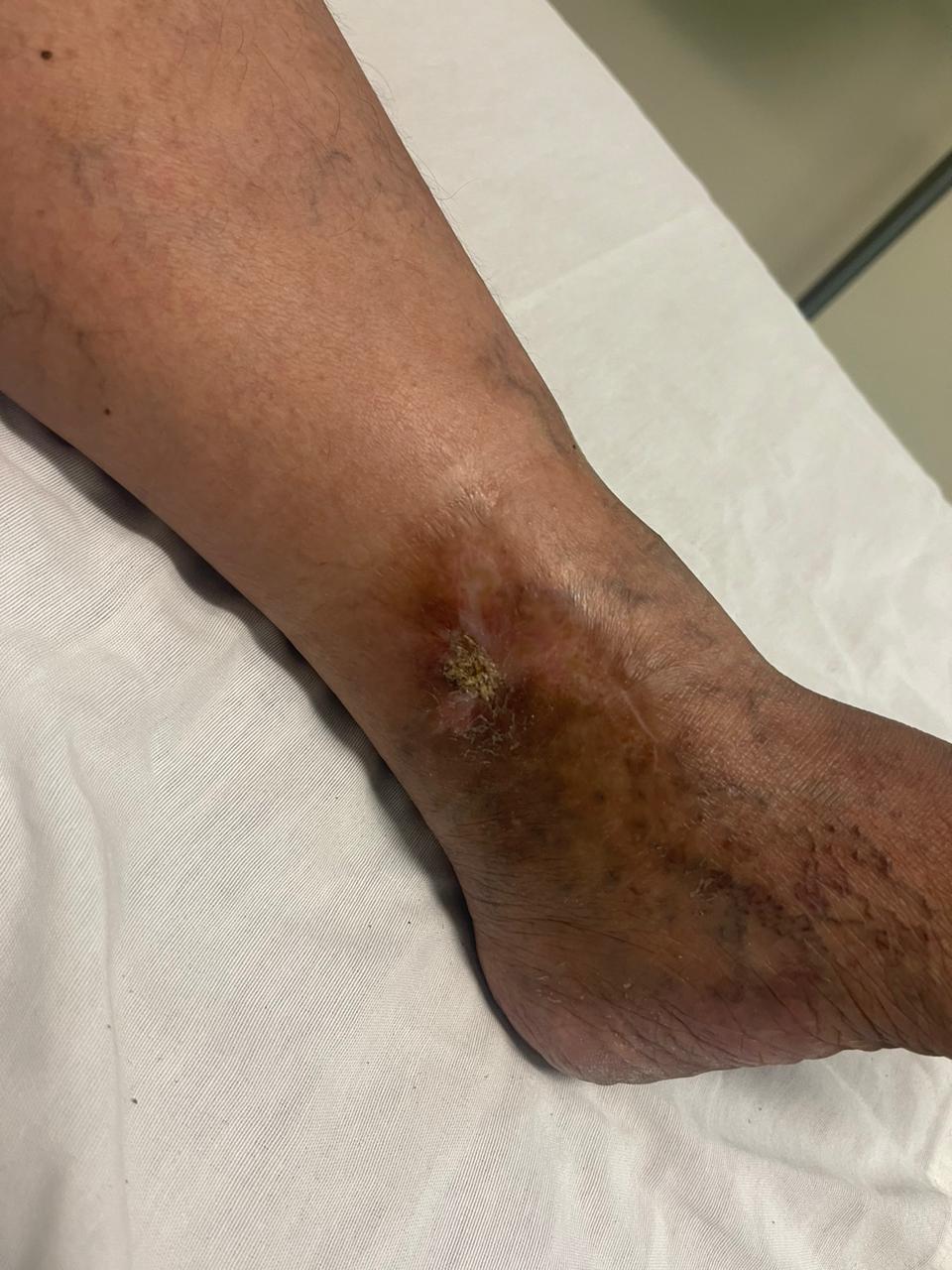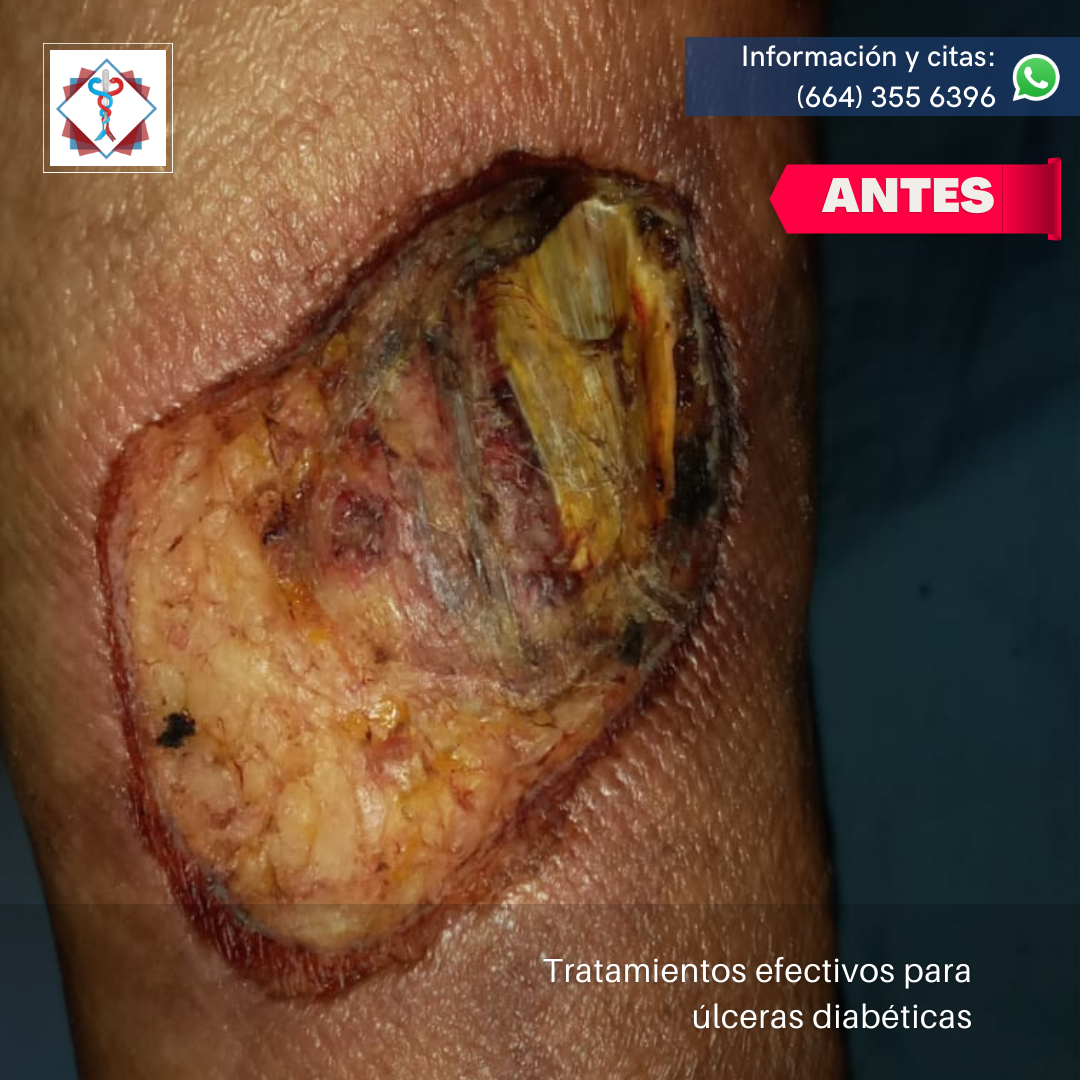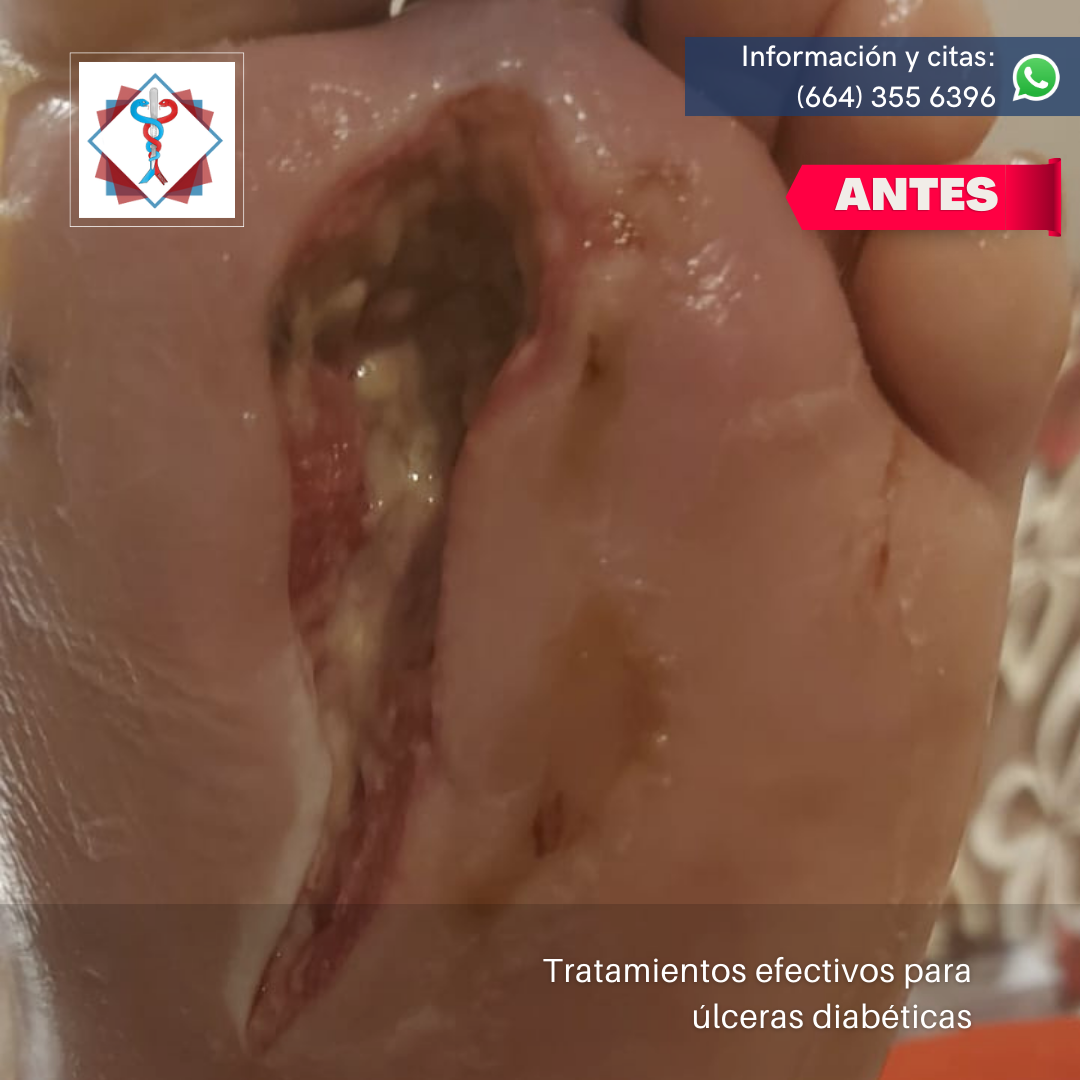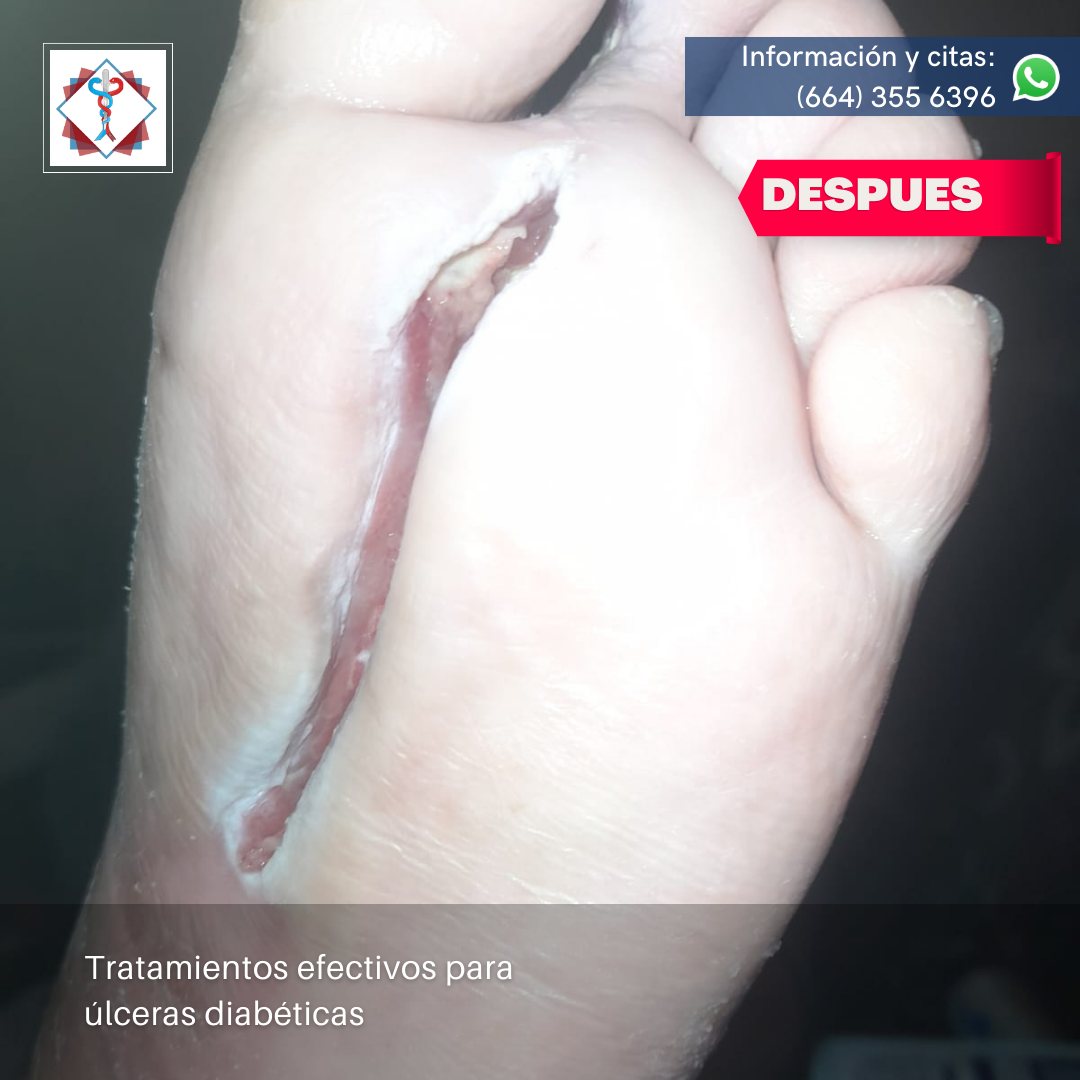Decide to improve your quality of life and call the doctor specializing in angiology IN TIJUANA
Diabetic Foot Ulcers
Ulcers or sores caused by Diabetes
Diabetes mellitus is the main cause of lower extremity loss.
80% of amputations began with an injury that went unnoticed and in most cases could have been avoided. When faced with a foot injury, if you have diabetes, time is money, get treatment as soon as possible and avoid fatal complications.
Implying?
To treat any foot injury in patients suffering from diabetes, what must first be ensured is circulation. If there is no circulation, any treatment is fruitless. Every patient who suffers from diabetes before being amputated should be evaluated by an angiologist and vascular surgeon.
What are the symptoms?
• Pain or fatigue when walking.
• Changes in color or temperature in the skin.
• Dry.
• Ulcers.
• Calluses on the sole of the foot.
• Areas of low sensitivity.
• Immobility in the joints.
• Alterations in the way you walk or balance.
• Cuts, scrapes, blisters, or anything that affects the integrity of the foot.
• Ingrown, thick, infected nails, etc.
Our Patients
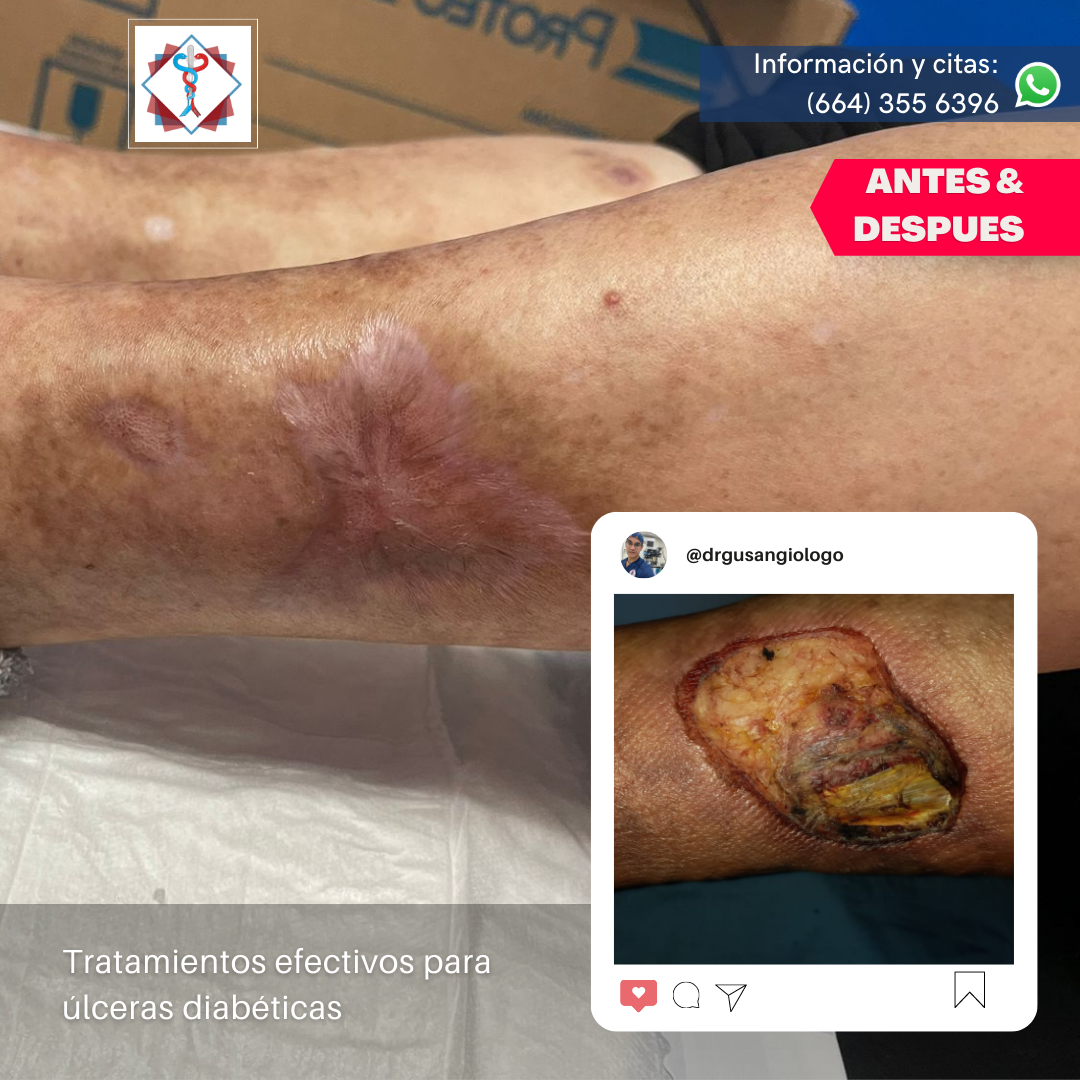
Venous ulcers
Ulcers or sores caused by Diabetes
can occur when the veins in the legs do not push blood back to the heart as they should, this is called venous insufficiency, which causes blood to build up and become congested in the veins of the lower leg, increasing the pressure
Initial symptoms include:
o Swelling, heaviness and cramps in the legs
o Skin that is hardened and dark red, purple, brown (this is a sign that blood is pooling)
o Itching and tingling
Signs and symptoms of venous ulcers include:
o Superficial ulcer with a red base, sometimes covered by yellow tissue.
o Irregularly formed edges.
o The surrounding skin may be shiny, tight, warm, or hot and discolored.
o Leg pain.
o If the ulcer becomes infected, it may have a bad odor and pus may drain from the wound.
Diabetic ulcers
Ulcers or sores caused by Diabetes
Signs and symptoms of venous ulcers include:
o Superficial ulcer with a red base, sometimes covered by yellow tissue.
o Irregularly formed edges.
o The surrounding skin may be shiny, tight, warm, or hot and discolored.
o Leg pain.
o If the ulcer becomes infected, it may have a bad odor and pus may drain from the wound.
can occur when the veins in the legs do not push blood back to the heart as they should, this is called venous insufficiency, which causes blood to build up and become congested in the veins of the lower leg, increasing the pressure
Initial symptoms include:
o Swelling, heaviness and cramps in the legs
o Skin that is hardened and dark red, purple, brown (this is a sign that blood is pooling)
o Itching and tingling
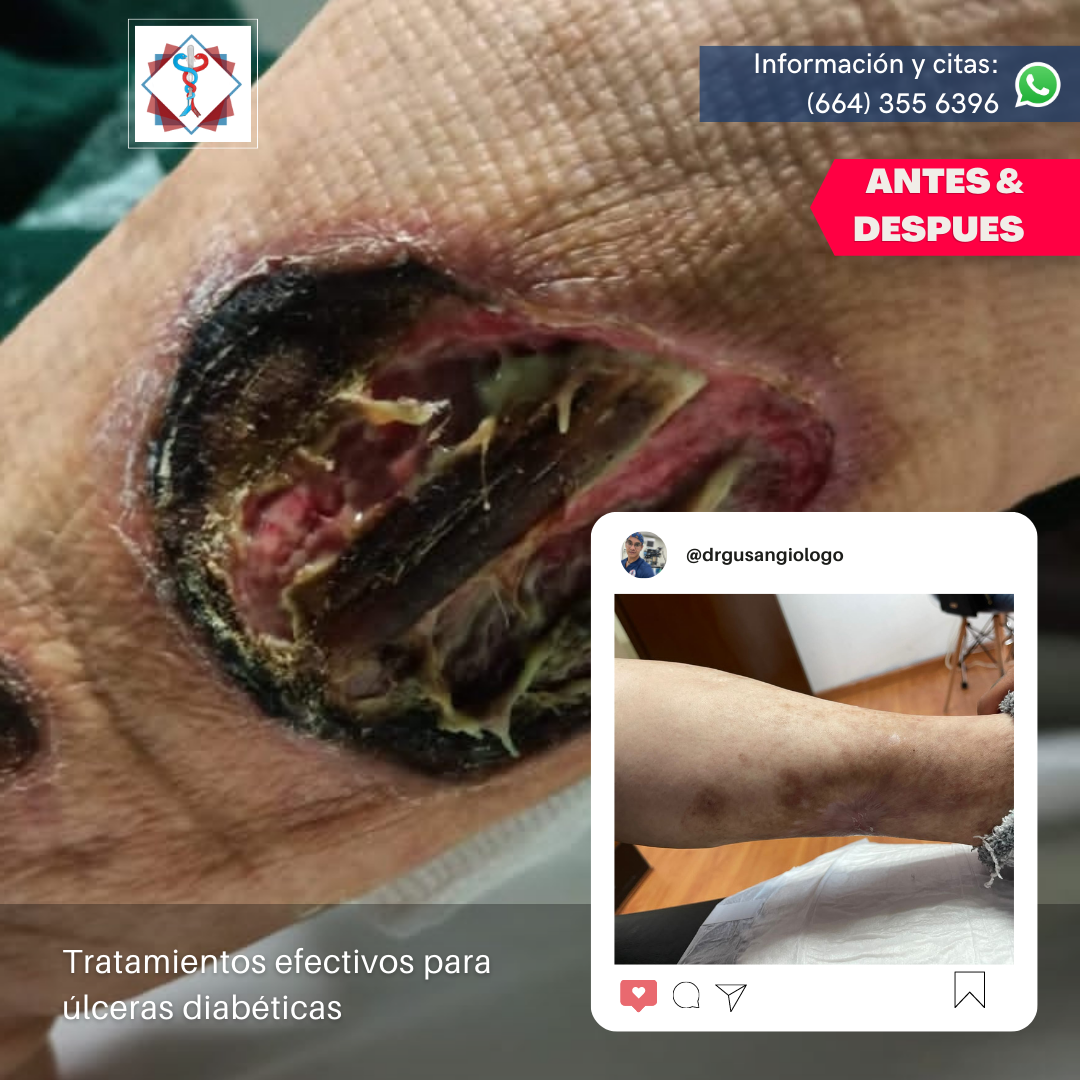
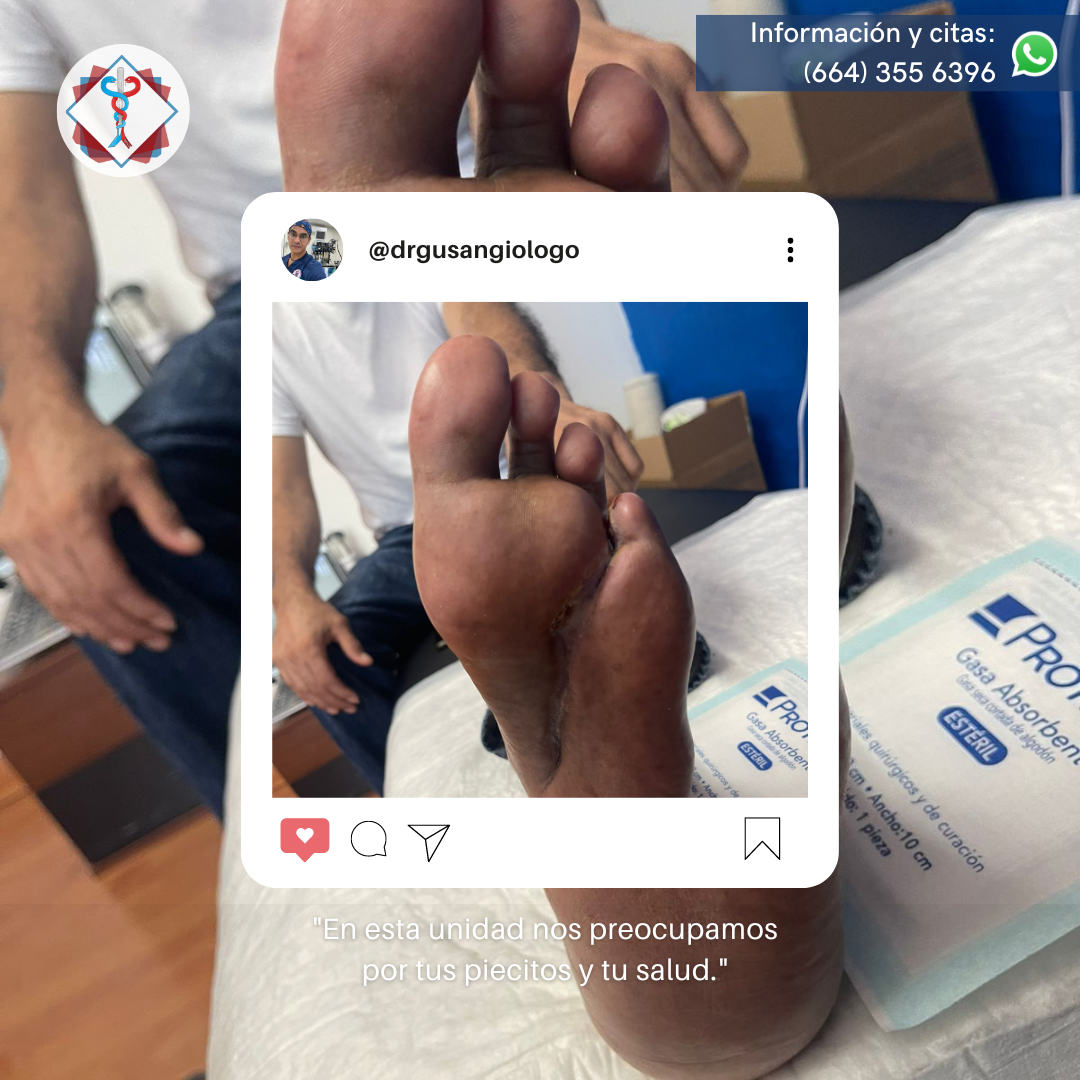
Venous ulcers
Ulcers or sores caused by Diabetes
can occur when the veins in the legs do not push blood back to the heart as they should, this is called venous insufficiency, which causes blood to build up and become congested in the veins of the lower leg, increasing the pressure
Initial symptoms include:
o Swelling, heaviness and cramps in the legs
o Skin that is hardened and dark red, purple, brown (this is a sign that blood is pooling)
o Itching and tingling
Signs and symptoms of venous ulcers include:
o Superficial ulcer with a red base, sometimes covered by yellow tissue.
o Irregularly formed edges.
o The surrounding skin may be shiny, tight, warm, or hot and discolored.
o Leg pain.
o If the ulcer becomes infected, it may have a bad odor and pus may drain from the wound.
Get an appointment today!
We take care of you!
Call us at 664-355-6396 or contact us for your appointment in Tijuana.
LOCATION
Dr. Gus | Angiologist
Francisco Javier Mina 1415, Mex-Chino Building Zona Urbana Rio 22010 Tijuana, BC
Clinic Hours (By Appointment)
- Mon - Tue
- -
- Wednesday
- Closed
- Thu - Fri
- -
- Saturday
- -
- Sunday
- Closed









